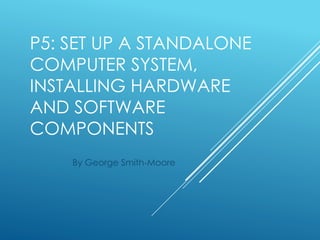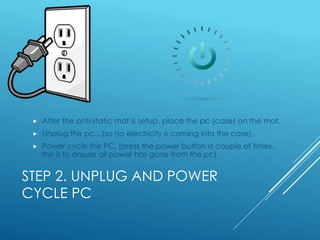The document provides instructions for setting up a standalone computer system. It describes installing various hardware components like the RAM, network interface card (NIC), optical drive, and hard disk drive (HDD). The key steps include placing the computer case on an anti-static mat, opening the case, installing the RAM by pushing it into slots on the motherboard, replacing the NIC with a wireless one by sliding it into an open slot, swapping out a broken optical drive, and connecting the HDD to the motherboard with SATA cables. Proper handling and connecting of the hardware components is emphasized to avoid damage and ensure everything works properly.
















